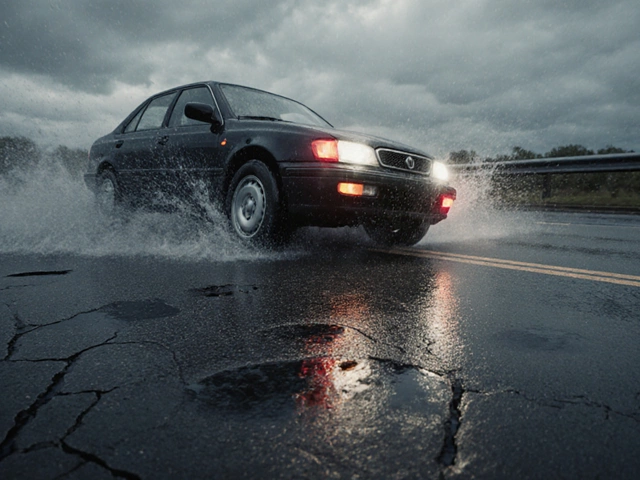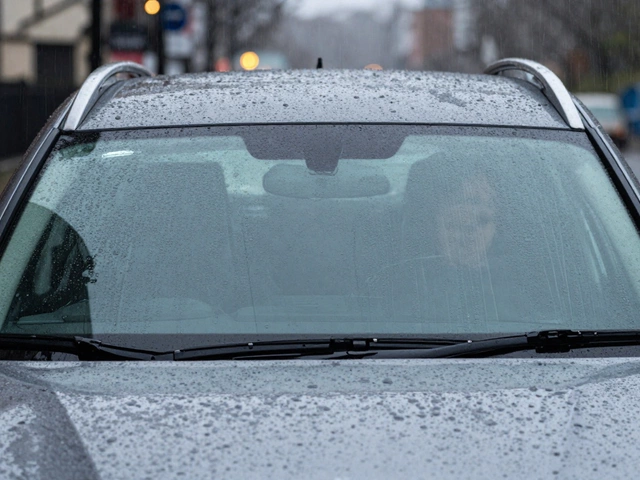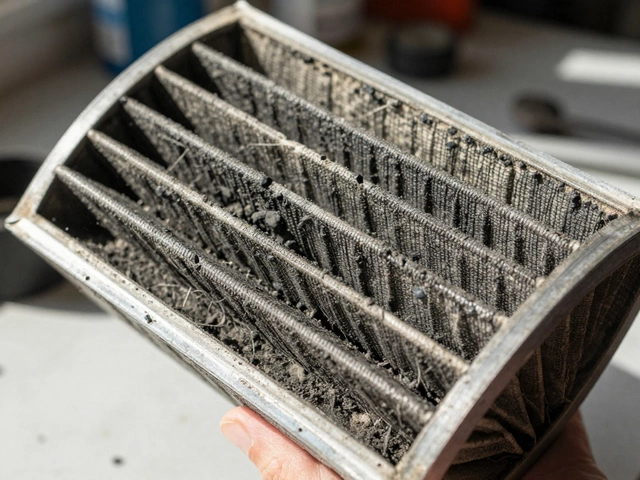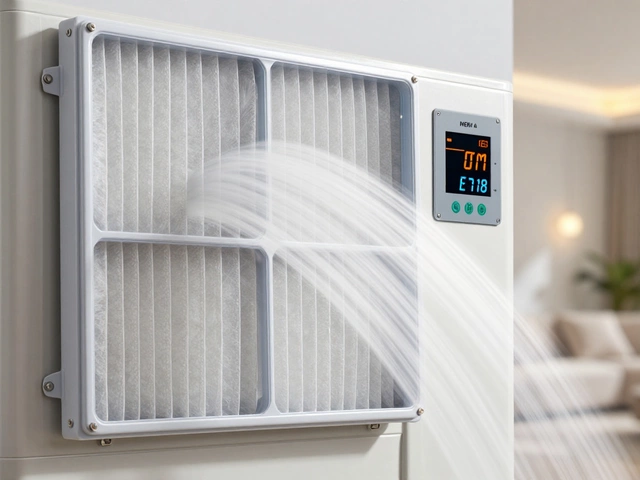
So, you're staring at your car's windscreen wipers and wondering if it's time to replace them. But hang on—do you replace the whole wiper blade or just the rubber part that actually contacts the glass? This decision isn't just a matter of preference; it could affect your visibility on rainy days and even your wallet.
First off, let's look at the main parts of a wiper. You've got the arm that attaches to your car, the blade holder, and that thin strip of rubber that does the dirty work of clearing away rain, snow, and grime. Over time, exposure to harsh weather can cause this rubber to dry out, crack, and eventually, become useless.
If your wipers are leaving streaks or making awful squeaking noises, it's a good indicator that something's up. Sure, a quick fix might be to swap just the rubber. It's cheaper and less wasteful, right? But then again, if the frame of the blade is bent or corroded, replacing just the rubber won't solve your problem.
- Understanding Wiper Blades Basics
- Signs You Need a Change
- Replacing Just the Rubber
- Going for the Full Blade
- Cost Considerations
- Maintenance Tips for Longevity
Understanding Wiper Blades Basics
Wiper blades are one of those car parts you don’t really notice until they stop working properly. The basic setup of a wiper blade includes the arm, blade holder, and the flexible rubber strip that clears water off your windscreen. Each part needs to function correctly to ensure that your visibility isn't compromised, especially during bad weather.
The arm is typically made from metal and connects the entire wiper system to your vehicle. It's driven by a small motor that makes the wiper blades move back and forth.
Blade Holder
The blade holder is where the more interesting engineering kicks in. This piece is designed to apply even pressure along the length of the wiper blade to ensure consistent cleaning. Different brands might use different materials, often ranging from plastic to metal, and each comes with its own durability factors.
Rubber Strip
The rubber strip is the unsung hero here. It does the actual cleaning, and it's usually made of a particular type of rubber that can withstand temperature changes and resist drying out. Still, over time, road grit, ice, and harsh UV rays take their toll.
So how long do these last? Generally, it's recommended that you replace the wiper blade rubber strip every 6 to 12 months. But exposure to extreme weather can change that timeline quickly.
Types of Wiper Blades
When choosing new wipers, you might encounter different types: conventional, beam, and hybrid blades.
- Conventional wiper blades: These are the most common and feature a metal framework supporting the rubber blade.
- Beam blades: They’re more modern, without an external frame, providing better contact with the windshield.
- Hybrid blades: These combine elements of both, trying to offer the best of both worlds regarding effectiveness and durability.
Understanding these components and factors can help you make a smart decision when replacing parts of your wipers. After all, knowing a bit more about how they work can make every rainy day a little less stressful.
Signs You Need a Change
Trying to figure out when it's time to change your wiper blade or rubber? There are some telltale signs! Your wipers should leave your windscreen clear, so if they're not, that's your first clue. Here’s what to look out for.
Streaks on the Windscreen
If you're driving and your wipers are leaving consistent streaks, it's a big red flag. This usually means the rubber is worn out or has started to crack. Sometimes dirt and debris caught on the blade can cause streaks too, so check for that before racing to the auto parts store.
Noisy Wiping
Squeaking, screeching, or chattering noises aren't just annoying; they’re telling you something's up. Noises often mean the rubber isn't making good contact with the glass. It could be hardening due to age or weather exposure. When the wiper isn't flexible enough to clean smooth, you'll hear about it!
Skipping Blades
Notice the wipers skipping across the glass rather than gliding smoothly? This is often due to issues with the wiper blade frame or hinges, perhaps from misalignment or rust. Skipping reduces visibility and means the entire blade might need checking.
Frayed or Split Rubber
Visually inspect the rubber. If you see frayed edges or splits, it's not negotiating with rain effectively. This condition renders your wiper useless at clearing water during a storm. It's a clear sign you need to replace either the rubber or the entire blade, depending on what else you spot during the inspection.
Catch these issues before they catch you in a downpour with blurred sight. Remember, if you've noticed these signs and you get hit by extreme weather often, your wipers might need more frequent attention than usual. Always have good quality wipers for safe driving in any condition.
Replacing Just the Rubber
So, you’re thinking about just replacing the rubber on your wiper blades. Makes sense, right? Why toss the whole unit when it’s just that thin strip of rubber that's worn out?
First, let’s talk about cost. Opting for a rubber-only replacement is usually more budget-friendly. A set of rubbers can cost around $10 to $20, which is a fraction of the full blade price. Plus, from a sustainability angle, you're reducing waste—giving a new life to the perfectly intact parts.
How to Replace the Rubber
Doing the swap isn't rocket science, but you do need to pay attention to the details:
- Measure First: Double-check the length of your existing rubber strip. You want to avoid the awkward moment of realizing you’ve got the wrong size halfway into the swap.
- Slide Out the Old Rubber: Most wiper blades allow you to slide the old rubber out. Sometimes there's a clip at the end you need to pop open first.
- Insert the New Rubber: Make sure the new rubber aligns perfectly. You’ll usually find metal strips running through the rubber that need to fit back snugly into the blade frame.
One thing to look out for is the compatibility with your existing frame. Not all rubbers are made equal, and some may not fit well with older models. So, read your car manual or do a little research online before buying.
Replacing just the rubber can extend the life of your windscreen wipers, but it only works if the rest of the blade, especially the frame, is in good condition. If the whole setup is a bit rusty or bent, springing for new wiper blades might be the better option.
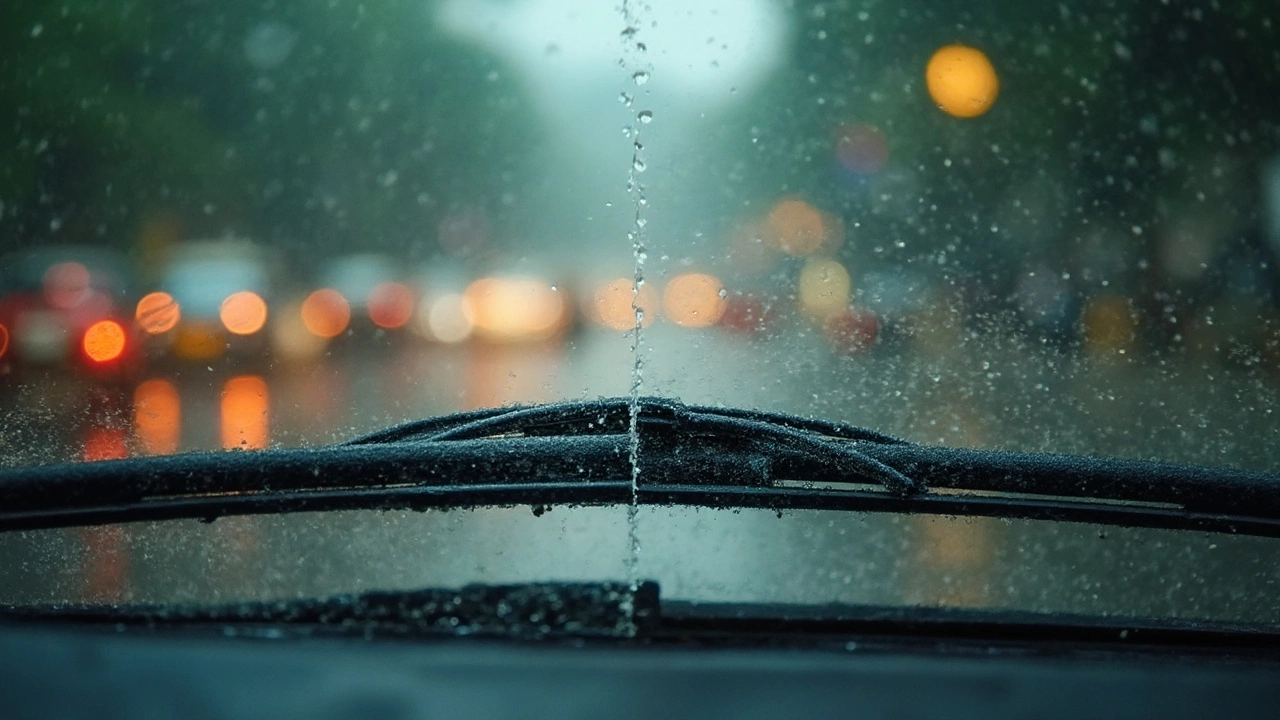
Going for the Full Blade
When it comes to fixing your windscreen wipers, swapping out the entire wiper blade can often be the best bet. You might be thinking, 'Why bother replacing the whole thing when just the rubber is worn?' Well, there's more to it than meets the eye.
Replacing the full blade ensures that every component functions smoothly, not just the rubber strip. An older wiper blade may have a weakened frame that doesn't hold the rubber properly, leading to poor performance. Opting for a full replacement resolves this and typically offers improved design features, thanks to newer technologies.
Wiper blade manufacturers often update their designs to improve water removal, minimize noise, and reduce wind lift. Modern blades sometimes use advanced materials that resist wear and tear better than older rubber compositions. By going for a full blade, you're not just getting a new rubber strip but the latest in wiper tech.
Cost-wise, full blade replacements can seem more expensive upfront. However, when you consider the lifespan and performance improvements, the investment often pays off. High-quality blades can last from 6-12 months, though some might even exceed that with proper care.
Installation Tips
- Ensure the new blade matches the exact length of the old one; a wrong size can cause functional issues.
- Follow the manufacturer's instructions for installation carefully. Each brand might have unique steps.
- Test the new blades immediately after installation to ensure they clear the windshield without streaks.
Next time you're due for a change, think about the full wiper blade replacement—it might just clear up more than just your windshield.
Cost Considerations
When it comes to choosing between replacing an entire wiper blade or just the rubber strip, your decision might boil down to how much you're willing—or able—to spend. Both options have their own price points and potential hidden costs, so let's break down the numbers.
Price of Full Blade Replacement
Swapping out the entire wiper blade is the most straightforward option. On average, a new set of blades will set you back somewhere between $15 to $40. The price varies based on the brand and your vehicle's make and model. High-performance blades might cost a bit more, but they often last longer and perform better under adverse weather conditions.
Cost of Replacing Just the Rubber
Replacing just the rubber strip is usually cheaper, often costing between $6 to $12. But here's the kicker—you need to be comfortable with a bit of DIY. Some car owners shy away from this option because inserting the new rubber into the old frame can be tricky.
Hidden Costs to Ponder
- Quality Concerns: Going for cheaper options might save you upfront, but they can wear out faster. In the long run, opting for higher-quality parts can be more cost-effective.
- Labor: If you're not a DIY enthusiast and prefer leaving blade maintenance to the pros, factor in labor charges when considering your options.
- Potential Damage: An improperly fixed rubber or a defective blade can lead to scratches on your windscreen, potentially leading to costly repairs.
Interestingly, a study by the Auto Care Association highlighted that Americans spent over $9 billion on windscreen wiper components in 2023 alone, emphasizing just how crucial keeping your wipers in good shape is to drivers all over.
Ultimately, if your blade's frame is intact and you're up for the challenge, simply replacing the rubber might save you money. Otherwise, go for the full blade swap to ensure longevity and performance.
Maintenance Tips for Longevity
Want to get the most out of your wiper blades? A little TLC goes a long way. Consistent care will not only keep them doing their job but also save you from frequent replacements.
Keep Them Clean
Start with the basics. Clean the rubber strip once a month. Use a damp cloth and some window cleaner, and gently wipe the strip to remove dirt and grime. This prevents grime build-up that can cause streaks.
Inspect Regularly
Regular checks are key. Look for any signs of wear and tear. If you spot cracks or dry spots on the rubber, it might be time to think about replacing them. Don't forget to check the wiper blade frame for corrosion or damage.
Avoid Direct Sunlight
Whenever possible, park your car in the shade or in a garage. Extended exposure to UV rays can degrade the rubber, making it brittle. This simple habit can prolong the life of your wipers.
Use Proper Wiper Fluid
Make sure you're using a quality windshield wiper fluid. This helps the wipers glide smoothly and prevents the rubber from drying out. Avoid using household cleaners, as they can damage the windscreen and the wipers.
Lift Wipers in Snow and Ice
If you're dealing with icy conditions, lift the wipers away from the windshield to prevent them from freezing to the glass. Ice can tear the rubber and even bend the blade frame.
- Check blades every 6 months.
- Invest in high-quality rubber replacements for better durability.
- Replace blades at least once a year for optimal performance.
By following these simple tips, you'll maximize the lifespan of your wipers and ensure clear visibility, no matter what the weather throws your way.
